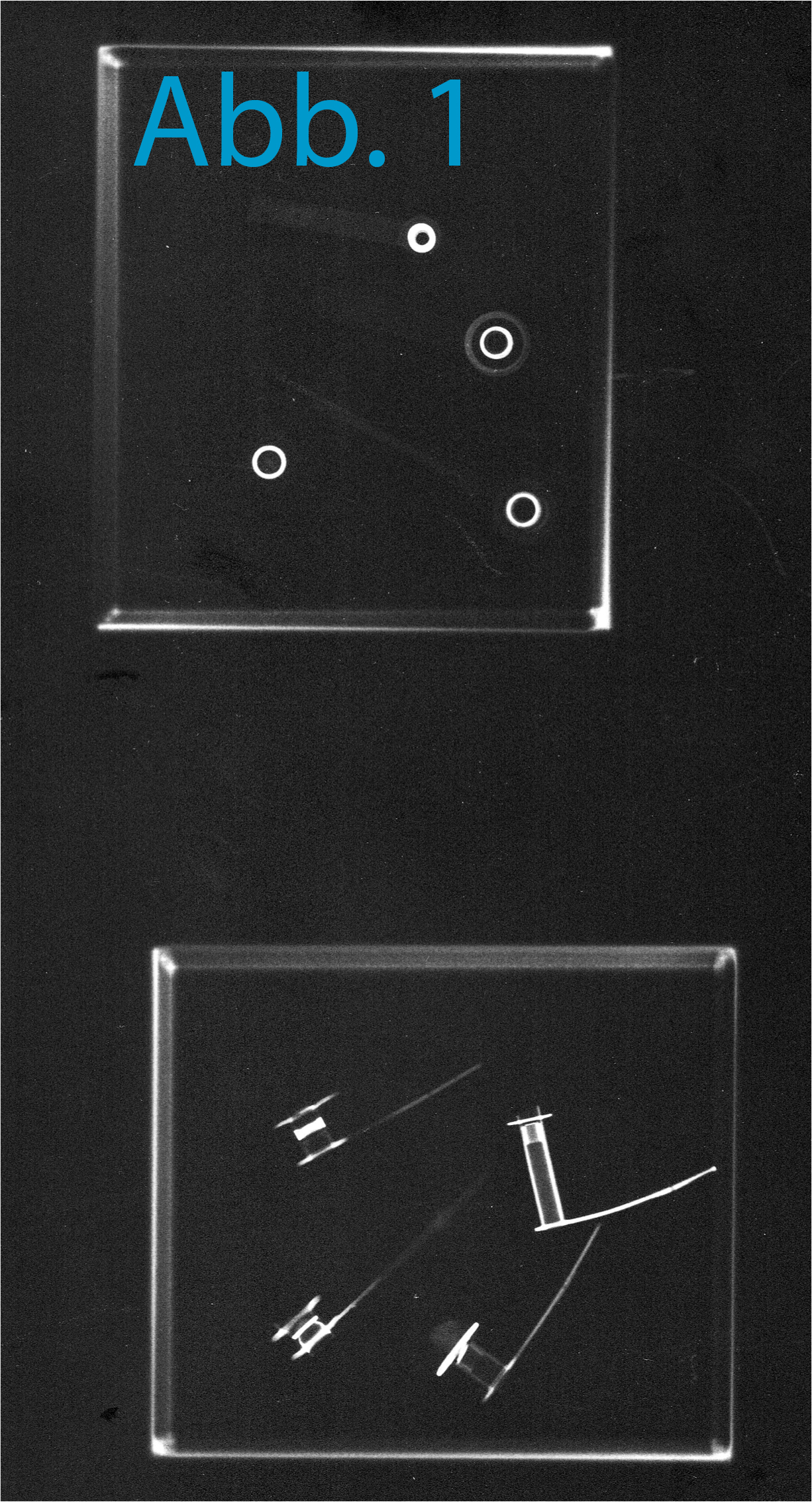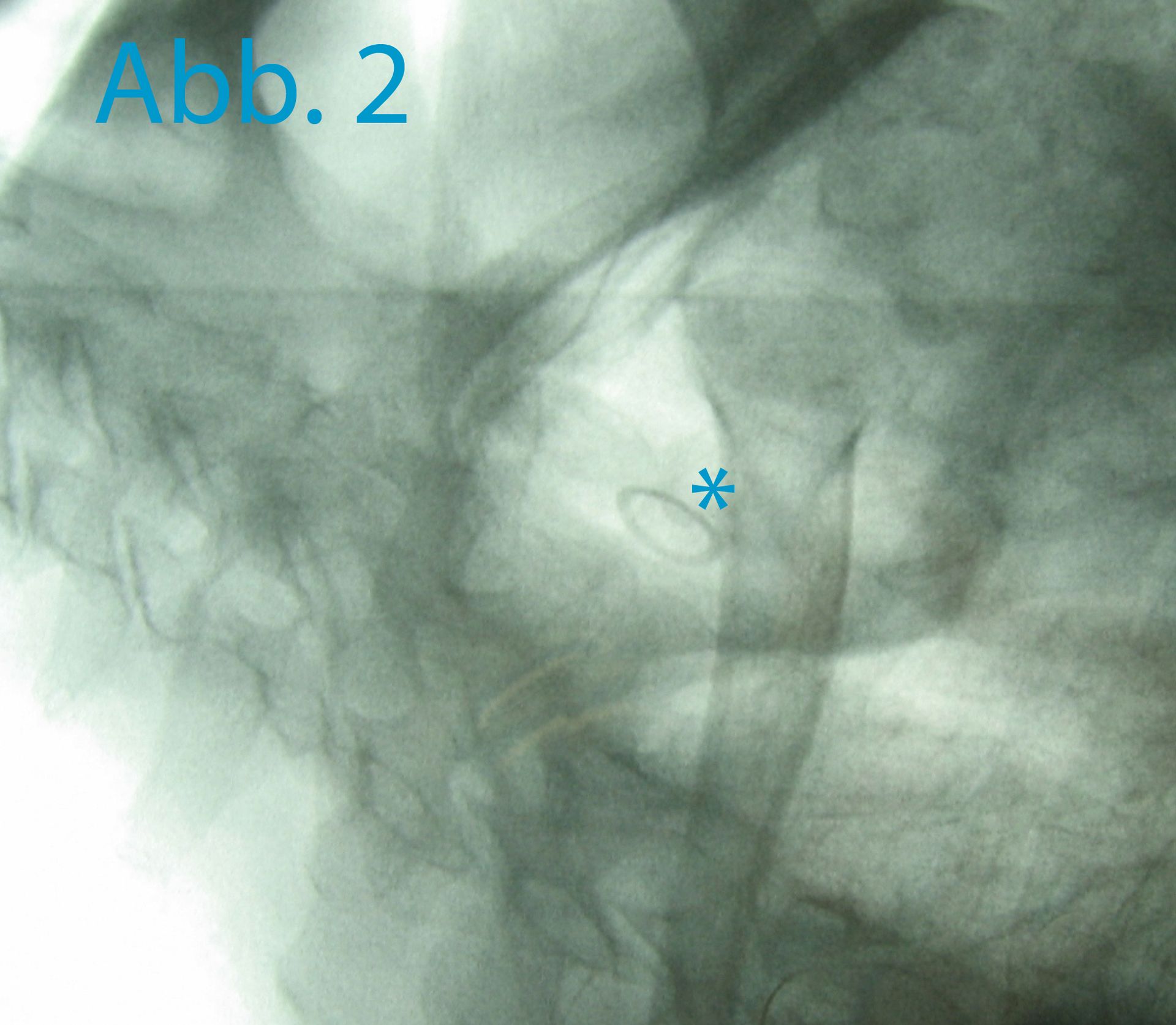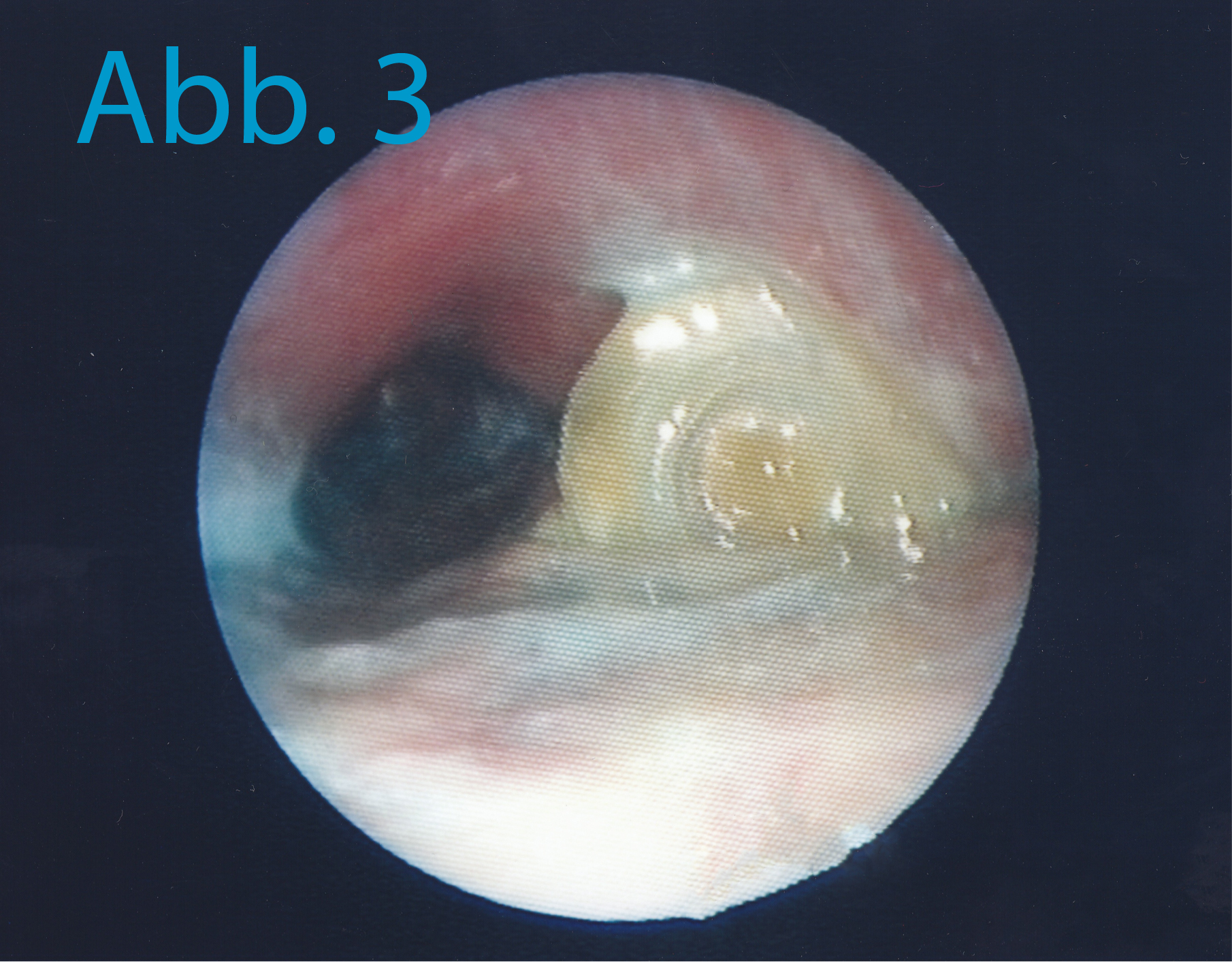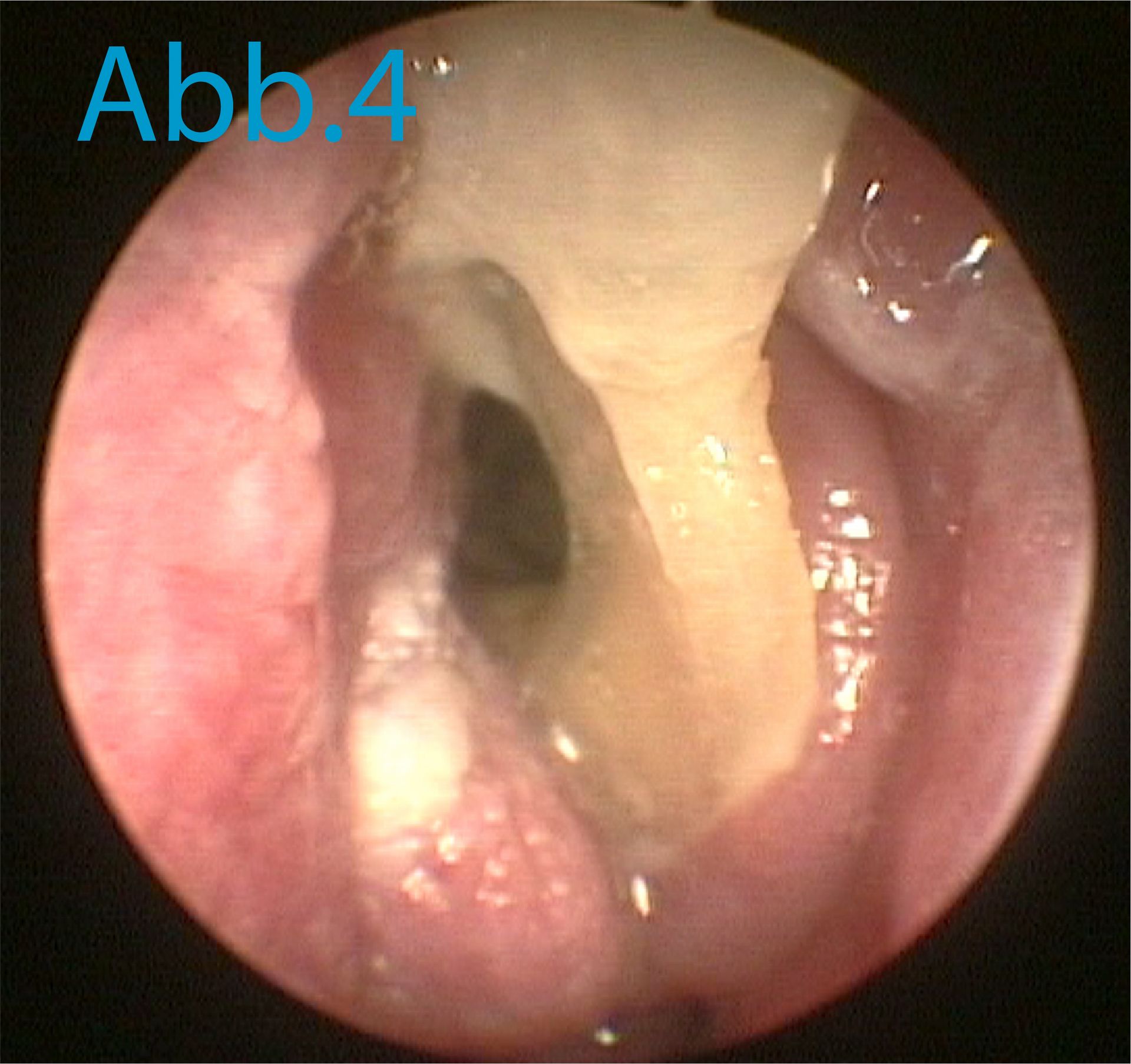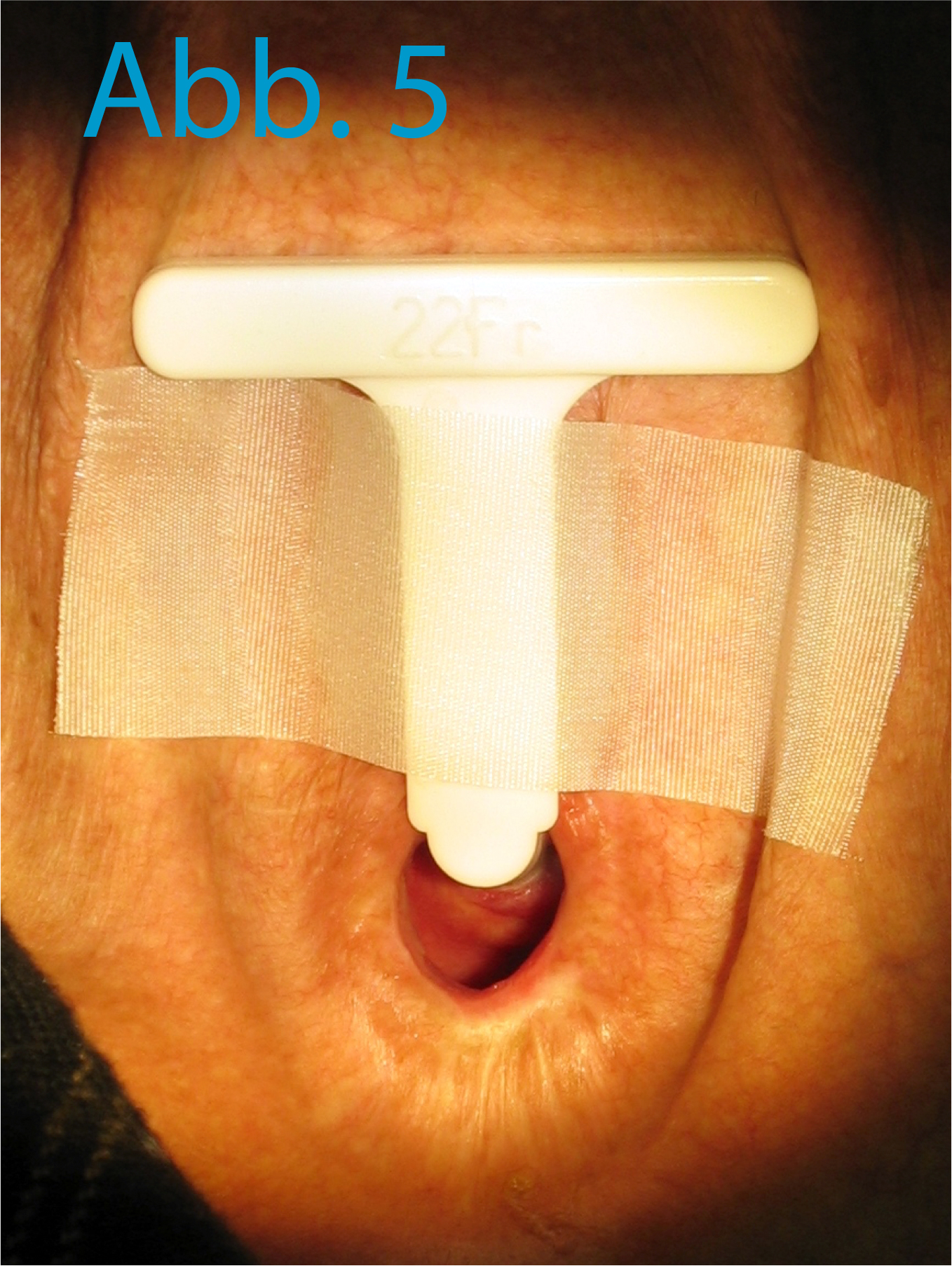Dislocation of voice prosthesis
Loss of voice prosthesis – noticed
Indwelling prostheses are secured in the shunt by the flanges. They may accidentally be dislodged when manipulated (e.g. when aspirating or cleaning with the brush). This usually occurs in the direction of the esophagus, and is noticed by the patient. Dislocation into the trachea can easily occur if the voice prosthesis protrudes somewhat into the trachea, and a tracheostomy tube is worn. If the tube is positioned on the tracheal flange of the voice prosthesis when it is inserted in the trachea, then the voice prosthesis will be dislocated as the cannula is pushed further into the trachea. If the patient notices the loss of the voice prosthesis, then he should know that he must immediately attend his doctor to have a new voice prosthesis fitted. If this is not possible, then the shunt should be secured with e.g. a gastric tube. Clinically, the focus is usually on aspiration problems. Even if a voice prosthesis has fallen in the trachea, it is rare for respiratory problems to occur. It is possible to talk well without a voice prosthesis as long as the shunt does not close spontaneously.
Loss of voice prosthesis – missed
If the patient does not realize that he has lost his voice prosthesis, which is often the case in older patients and those in a significantly impaired general state of health, aspiration pneumonia usually occurs. It is less common for the complete inability to speak to be the main symptom in the missed loss of a voice prosthesis and for the shunt to have grown over. This will occur if the voice prosthesis becomes attached to the shunt and migrates into the food pipe (see also prosthesis extrusion). The shunt will close on the tracheal side, above the voice prosthesis. In the end, the voice prosthesis can no longer be seen and the patient starts to have problems speaking when the shunt has almost closed over.
Diagnosis
Examination, flexible transnasal endoscopy and probing of the shunt (if still possible) will all help to confirm the loss of the voice prosthesis. A flexible tracheosopy to exclude dislocation of the prosthesis in the wind pipe and bronchia (see ill. 3) should always follow. An x-ray of the thorax may be required in individual cases to localize the voice prosthesis (most voice prostheses have x-ray-proof segments, see ill. 1 and 2). If the voice prosthesis has fallen into the food pipe (ill. 4), the patient can wait until it is evacuated spontaneously. The literature speaks of a case in which a voice prosthesis caused an intestinal obstruction, and patients should be informed of this accordingly.
Treatment in the event of dislocation of a voice prosthesis
Three treatment steps are required
These steps should be carried out in the order required for the main symptom. If the aspirated voice prosthesis causes breathing difficulties, then the first thing to do is to remove it. If aspiration is the main issue, then it must be brought under control.
A) Search and removal if required of the dislocated voice prosthesis
In the event of a voice prosthesis being lost, then the first thing to do is to rule out the possibility of it having dislocated in the trachea. Flexible endoscopes are ideal for this purpose. If there is a voice prosthesis in the tracheobronchial system, it may be removed by flexible or rigid endoscopy. If the voice prosthesis has dislocated into the esophagus, then the patient can wait for it to be evacuated spontaneously. Only in very rare cases will this lead to complications.
B) Securing the shunt and preventing aspiration
A dilator is inserted in the shunt in order to secure the shunt and stop aspiration (ill. 5). If the shunt has already shrunk so that it is not possible to insert a dilator, then it may be possible to probe the shunt using a small suction catheter and expand it using the Seldinger technique.
C) Insertion of a new voice prosthesis
If the shunt has been secured and dilated adequately, then a new voice prosthesis may be inserted anterograde. If the shunt has already shrunk and is difficult to dilate, then a retrograde insertion of a voice prosthesis may have to be carried out in order to ensure that the voice prosthesis is positioned correctly. If the shunt has already closed, then a new shunt may be inserted once the site has healed.

